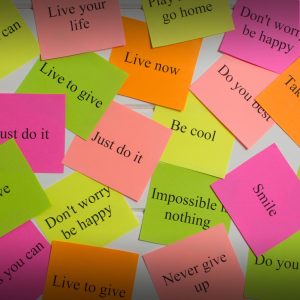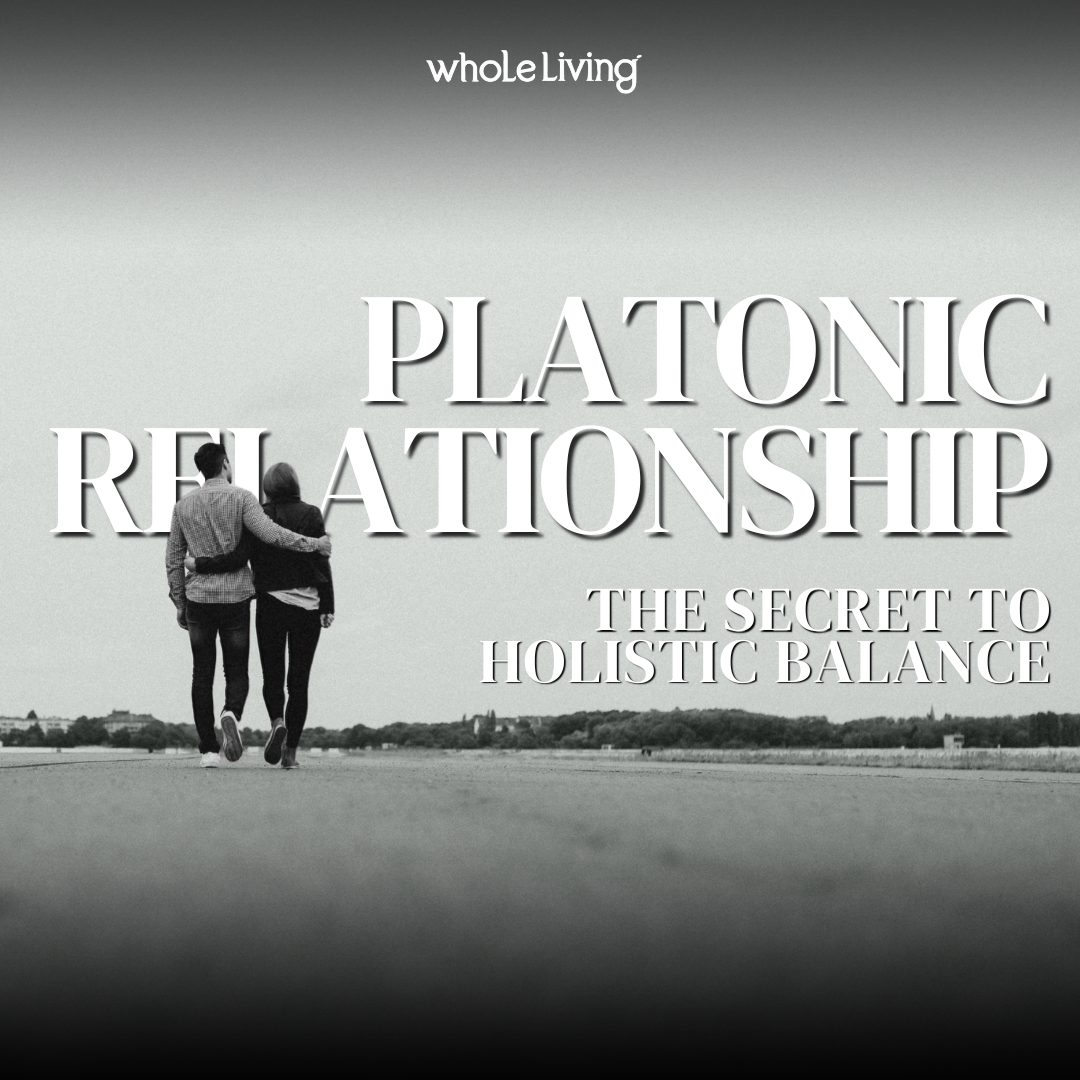In This Article
Your heart speaks a unique language. And so does the heart of every person you care about. Learning to understand love languages is one of the most powerful ways to bring harmony, connection, and warmth into your life. Whether you're in a new relationship, have been married for years, or are looking to strengthen your bond with friends or family, the love languages theory can gently guide you toward deeper connection. It’s not about doing more. It’s about doing what matters most in a way that feels natural and true.
Gary Chapman, a relationship counselor and author, introduced the five love languages as a simple yet effective way to understand how people express love and how they best receive love. When you know someone’s primary love language, everything begins to make sense. Arguments soften. Distance shrinks. The connection becomes easier to nurture. It gives you a clearer path toward emotional healing, forgiveness, and renewed closeness.
This approach has transformed countless romantic relationships, friendships, and even family dynamics. Because love isn’t just one thing. It's a combination of attention, action, and care. And when you learn to give and receive it in a way that feels meaningful, your emotional world becomes richer. The love languages framework isn’t a rulebook—it’s a mirror that reflects the way we connect with others at our core.
Together, we’ll explore each of the five love languages with clarity and warmth. My goal is to help you find not only your own language but also how to speak fluently in the ones that matter to your loved ones. You deserve to feel loved, and you deserve to love in a way that nourishes both hearts. This is where the journey begins—one that’s rooted in empathy, presence, and emotional nourishment.
What Are Love Languages and Why Do They Matter?

Let’s start at the beginning. The love languages concept is rooted in the idea that not everyone experiences love in the same way. Some people light up from a heartfelt compliment, while others feel closest to you when you simply show up and spend time. These are emotional preferences, not personality traits. And they give you insight into what makes a healthy relationship thrive. When we overlook these differences, misunderstandings can quietly grow.
The love languages framework includes five distinct ways people express affection and feel emotionally connected: words of affirmation, acts of service, receiving gifts, quality time, and physical touch. Each of us has a primary love language—the one that resonates most deeply. But many of us speak a mix of them. The key is to recognize which one speaks the loudest. You may naturally express love in one way, while needing to receive love in another. This awareness can transform the way you navigate relationships.
When you understand the specific love language of someone you care about, you create more than connection—you create safety. You show them that their emotional world matters. That you see them. And when someone feels seen, they open up, soften, and flourish. That’s the true beauty of this theory by Gary Chapman. In that moment, you’re not just saying “I love you”—you’re proving it in a way they truly understand.
The reason this matters is because love without clarity can lead to confusion. You may be pouring your heart into simply performing household duties, thinking you're expressing care, while the other person longs for touch or a few kind words. When love is lost in translation, even good intentions fall flat. The more we learn to speak louder in the right language, the more whole and fulfilling our relationships become. And in doing so, we begin to foster a life of better communication, mutual care, and emotional alignment.
Words of Affirmation: The Language of Encouragement

Words hold power. For those whose primary love language is words of affirmation, spoken or written expressions are more than just communication—they are connection. This might look like daily love you's, handwritten notes, or texts reminding someone that they’re appreciated. When you take the time to say how much someone means to you, you fill their cup. You help them feel loved, heard, and valued. These affirmations create a lasting echo in their emotional space.
This isn’t about being poetic or dramatic. It’s about being intentional with your words. A simple, “I’m so proud of you” or “Thank you for all you do” can be enough to brighten someone’s entire day. These forms of verbal affirmation create emotional safety. And for some, they are the strongest way to receive love. They see your words as proof of your love—evidence that they matter.
People who speak this language also tend to notice silence more deeply. When the words stop, doubts can creep in. That’s why it’s helpful to regularly practice verbal appreciation and offer genuine, encouraging feedback. These kind words don’t have to be grand—they just have to be real. Because for this group, actions are nice, but words speak louder. Silence, criticism, or harsh language can leave deep emotional bruises.
If this sounds like you or someone you love, lean into it. Let your romantic partners, friends, or family know exactly what you admire about them. Celebrate their wins, support their efforts, and notice the little things. Your words have the power to heal, uplift, and remind someone they matter. In a world full of noise, a gentle, loving voice can be a true anchor.
READ ALSO: Love Bomb or Real Love? How to Tell the Difference
Acts of Service: Showing Love Through Action

For many people, love is expressed not through words, but through doing. Acts of service are all about showing love by making life easier for someone else. Whether it’s doing the laundry, cooking dinner, or helping out with errands, these gestures speak volumes to someone who values this love language. They tell your loved one, “You are worth the effort.” In their eyes, love looks like helping hands and thoughtful tasks.
If your husband's love language is acts of service, a clean kitchen might feel like a warm hug. Or if your child lights up when you fix their bike without being asked, chances are, this is how they best receive love. In these relationships, simply performing household duties or helping without being prompted often means more than gifts or grand gestures. Because love, to them, is shown through effort. It’s less about what you say and more about what you do.
It’s not about being perfect or doing it all but about being thoughtful and intentional. When you offer a helping hand, you’re also offering part of your heart. It shows that you’re willing to step in, not because you have to, but because you care deeply. This kind of love often lives in the small, unnoticed things—the everyday gestures that carry great meaning.
Remember, for someone with this primary language, broken promises or ignored responsibilities may feel like more than forgetfulness—they can feel like a lack of care. So if this is your partner’s love language, the little things matter. Take time to notice what they need and meet them there, with love in action. Acts of service are how they experience your devotion, and they will remember your efforts long after the task is done.
Receiving Gifts: More Than Just a Pretty Package

For some, love is tangible. It's found in a thoughtful gift, a small surprise, or a keepsake that holds meaning. When someone’s love language is receiving gifts, they don’t need extravagance—they need intention. They feel seen when you mark special occasions or bring home their favorite snack simply because you thought of them. To them, the gift is a symbol. It says, “You’re on my mind.” The object represents care, presence, and emotional depth.
This isn’t about materialism. It’s about meaning. A handwritten card, a flower picked from the garden, or a little memento from a trip can all carry deep emotional weight. These gifts remind them that they are loved, even when you’re apart. For them, the object holds the memory. It becomes a physical reminder that they are cherished.
If your romantic partner lights up when receiving a small surprise, pay attention. These moments create emotional touchpoints. And when done thoughtfully, they can express heartfelt commitment in a lasting way. It’s about presence, not price. The value lies in the intention behind the gift, not its size or cost.
So whether it’s a wrapped present or a stone with a story behind it, let your gifts say what words sometimes can’t. The act of giving becomes a way to express love, care, and appreciation in a language that truly resonates. In this way, a well-timed gift becomes more than a gesture—it becomes an emotional anchor.
Quality Time: Presence Over Presents

In a world full of distractions, the gift of undivided attention is rare and precious. For those whose primary love language is quality time, nothing says “I love you” more than your presence. This doesn’t mean grand dates or elaborate trips. It means fully showing up, setting aside screens, and truly connecting. They don’t need your time—they need your focus.
Spending uninterrupted time together creates intimacy and strengthens the bond. Whether it’s taking a walk, enjoying a shared hobby, or having meaningful conversations over tea, the key is being present. Your time, attention, and availability speak directly to their heart. They feel cherished when you’re truly with them. It’s less about what you’re doing and more about being together.
Missed moments or multitasking during together time can feel hurtful. If this is your partner’s love language, make the effort to schedule connection, not just squeeze it in. The quality matters more than the quantity. It’s about emotional presence. Spending quality time helps them feel prioritized and secure.
When you honor someone’s need for quality time, you’re saying, “You matter to me. I choose to be here.” And in return, they feel safe, seen, and truly loved. Time, when shared intentionally, becomes one of the most healing and joyful ways to express love. The beauty of this language is that it doesn’t require much—just a little attention, a little planning, and a lot of heart.
Physical Touch: The Warmth of Being Close

For some people, physical touch is essential for feeling safe and loved. It could be a hug, a gentle touch on the arm, or simply holding hands. These small, daily moments of physical affection help them feel emotionally connected and deeply understood. They aren’t looking for constant closeness, but rather meaningful contact. Touch is their emotional glue—it brings them closer, even in silence.
Gary Chapman explains that physical presence communicates security for those who speak this language. If you find yourself reaching out to touch your loved one’s shoulder during a conversation, or if you feel most at ease when cuddled up next to someone, this might be your primary love language. Touch, to you, is more than comfort—it’s connection. It’s how you both express love and receive love most naturally.
On the flip side, the absence of touch can feel like distance. For those with this specific love language, it’s easy to feel unloved if there’s a lack of physical intimacy. That’s why it’s important to recognize and honor this need in your romantic relationships or close bonds. Neglecting this need can lead to emotional disconnection, even if everything else seems fine.
A warm embrace, a back rub, or even sitting close on the couch can be healing. These aren’t grand gestures. They’re everyday ways to express heartfelt commitment. If this is your partner’s love language, simple touch can go a long way in helping them feel appreciated and grounded in love. Never underestimate the healing power of being physically present and gently connected.
READ ALSO: Friend Quotes That Remind You You’re Loved
How to Discover Your Primary Love Language

We’re not all wired the same—and not everyone gives or receives love in the same way. Some people light up from physical touch, while others crave quality time or gentle words of affirmation. That’s why discovering your primary love language is such a gift. It allows you to better understand what fills your heart and why certain gestures matter more than others. It gives you a soft, guiding light in all your relationships.
To find your specific love language, begin by reflecting on what makes you feel most cared for. Do you feel most connected when someone helps you out with chores? Or do you come alive when a loved one spends uninterrupted time with you? Maybe your heart feels fullest after a warm hug or a thoughtful gift. These simple clues are gentle signposts pointing toward your emotional needs.
You can also notice what tends to hurt you most. If forgotten anniversaries sting or broken commitments leave you feeling low, those moments can reveal which language you long to receive. Pay attention to what you ask for the most and how you often express love to others. People tend to give in the way they wish to receive.
Don’t worry if it takes time to figure it out. You might speak more than one language, or your preferences may shift slightly over the years. The beauty lies in becoming more in tune with yourself and more open to deeper connection. This is your space to learn, grow, and feel truly seen.
Why You and Your Partner Might Speak Different Languages

It’s perfectly natural if you and your partner don’t share the same love language. In fact, it’s more common than not. Maybe your heart longs for physical affection, while your partner shows love through acts of service. This difference doesn’t mean something is wrong. It simply means you both speak in different emotional dialects—and learning to translate them brings greater closeness.
When you understand your partner’s love language, it changes how you show up in the relationship. You begin to notice the quiet ways they’re trying to express love, even if it’s not how you’d expect. Washing the dishes, picking up your favorite treat, or sitting beside you in silence might be their version of saying, “I care about you deeply.” It’s not about speaking your language perfectly. It’s about paying attention and making the effort to understand.
Chapman's theory encourages us to become fluent in love—not just our own, but in our partner’s, too. When both people are aware of each other’s needs, emotional harmony becomes possible. It leads to more relationship satisfaction, fewer misunderstandings, and deeper emotional safety. It becomes easier to express heartfelt commitment in ways that feel real and grounded.
So if your partner values words of affirmation and you lean on quality time, let that be your cue to stretch your comfort zone. Relationships thrive when both people are willing to meet in the middle. With awareness and grace, your different languages can become your shared strength.
The Emotional Love Tank: What Happens When It’s Empty?

Think of your heart like a vessel—what Gary Chapman calls the emotional love tank. When it’s full, you feel secure, joyful, and cared for. When it’s empty, even the smallest broken commitments can feel like rejection. This invisible tank is quietly filled or drained by how others express love, or how we receive it. Tending to it regularly is a simple way to nurture your relationship from the inside out.
If your primary love language is touch and your partner rarely holds your hand, your emotional tank might start to feel low. Or if you thrive on quality time, but busy schedules keep getting in the way, you may begin to feel overlooked. It’s not about blame—it’s about awareness. The more we understand what fills that tank, the better we become at caring for each other’s hearts.
Filling your partner’s tank doesn’t require grand gestures. It’s the everyday gestures—the quiet hug, the love you's, the offer to make tea without asking—that keep connection alive. And when you speak their specific love language, you don’t just offer affection—you build emotional security. You help them feel valued, seen, and safe.
Check in with each other often. Ask how full your partner's love tank feels. Listen gently, without defense. It’s a loving way to stay emotionally close, even during stressful times. When both tanks are full, your relationship flows with ease, warmth, and trust.
READ ALSO: Love Is Hurting: A Quiet Invitation to Rest
Love Languages in Everyday Life: It’s More Than Romance

Love languages don’t just apply to romantic relationships. They show up in friendships, families, and even the way we treat ourselves. Whether it’s giving your child a hug before school, calling a friend for meaningful conversation, or helping a neighbor with groceries, every act of care speaks a language. And the more aware you are of these everyday moments, the more grounded and loving your world becomes.
In family life, understanding a person’s love language helps ease tension and build stronger bonds. Maybe your teenager doesn’t want a hug but lights up when you spend an hour doing something they enjoy. Or perhaps your parent doesn’t say much, but consistently shows up with little surprises—showing their love through receiving gifts. These small moments reveal big truths.
Even in friendships, the same care applies. Some friends need your undivided attention, while others feel most loved when they receive a kind message. If you start to pay attention, you’ll see the languages all around you. Expressing love this way strengthens not just one connection—but all your relationships.
Let love be part of your daily rhythm, not just for big occasions. Simple touch, kind words, small acts of kindness—they all matter. The more you align with how people receive care, the more peace and joy you’ll cultivate in everyday living.
Living Whole with the Love Languages Framework

To live with intention is to listen—not just to others, but also to yourself. The five love languages offer a soft structure for building relationships rooted in presence and compassion. They help you tune into the emotional needs of your loved ones, while also honoring your own. This balance is at the heart of whole living—where love, care, and clarity guide your choices.
When you understand your own primary language, you begin to meet your needs with more kindness. You no longer wonder why certain actions matter so much. And when you learn how others around you need to receive affection, you show up for them with more grace. This awareness creates space for mutual respect and true connection.
Living whole also means practicing empathy without burnout. You don’t have to speak every love language fluently, but learning a few key phrases can change everything. Being emotionally available, keeping better communication, and responding to your partner's or child’s emotional needs strengthens your relationships. It becomes less about effort and more about alignment.
The beauty of the love languages theory is its simplicity. You don’t need perfection. You just need presence. And when you lead with love—spoken in the way it’s understood—you create a life that feels not only connected, but deeply nourishing.
Key Takeaway: Love That Speaks to the Soul
Understanding the five love languages is more than a theory—it’s an invitation. It’s a way of living with more empathy, more intention, and more joy. When you know how to express heartfelt commitment, listen deeply, and offer care in the way someone needs it, you open doors to lasting peace and emotional connection. And just as importantly, you learn how to gently care for your own heart, too.
The magic happens when you no longer assume, but instead, choose to notice. When you ask, reflect, and adjust—because someone’s happiness matters to you. Whether you’re offering a hug, sharing quality time, or writing a note filled with kind words, it all becomes part of your daily rhythm. These small shifts don’t just strengthen your romantic relationships. They nourish every bond in your life.
Let your love be rooted in presence, not performance. Let your care be shown in ways that actually land in the hearts of those around you. This is your invitation to love wisely, live gently, and create a life of connection that feels as good as it sounds.
Because when love is spoken in the right language, it feels like home. And that’s the essence of whole living.




















